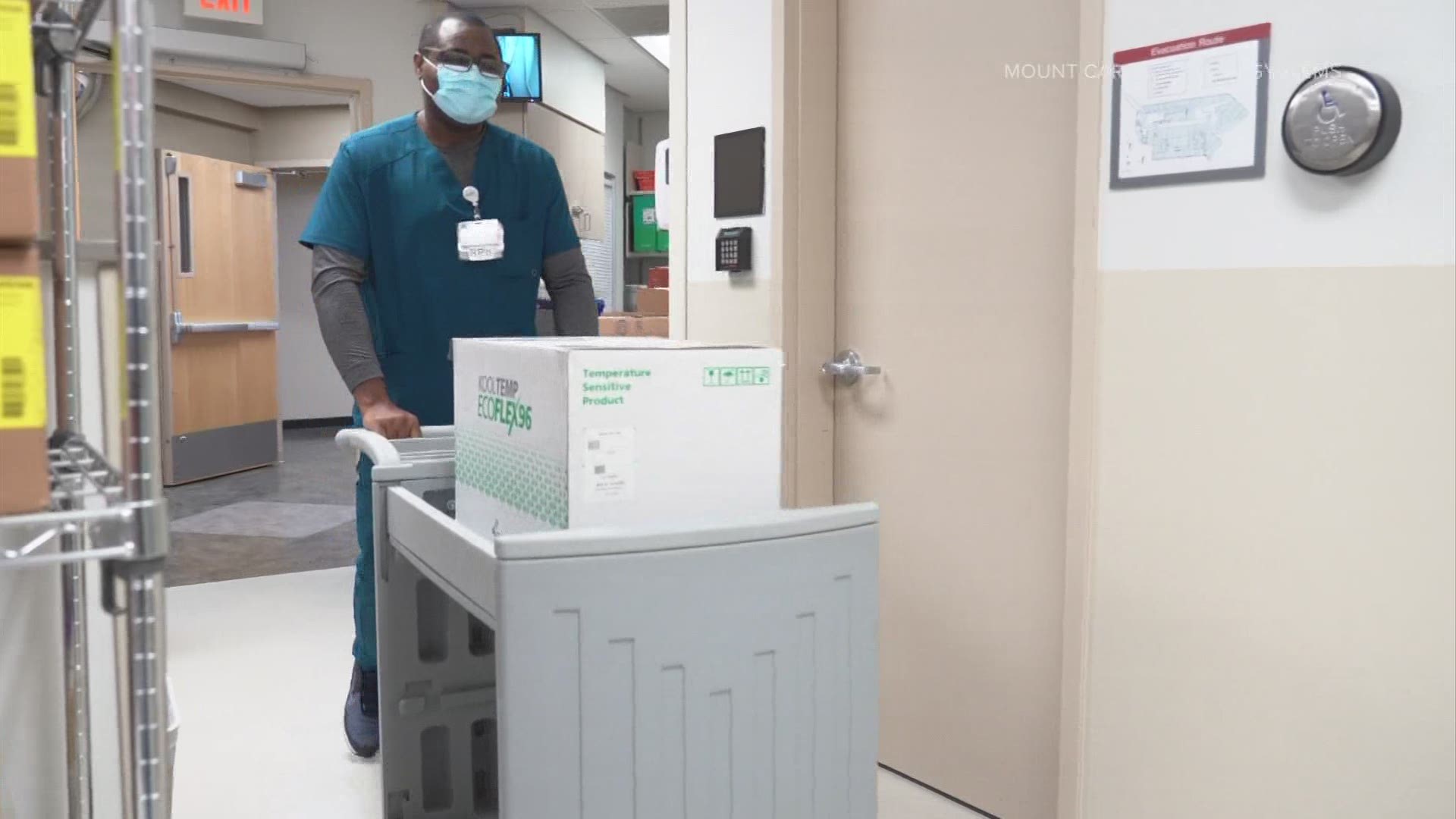COLUMBUS, Ohio — The Moderna COVID-19 vaccine has arrived in Ohio and other parts of the country on Monday.
Governor Mike DeWine said last week the state expects to receive more than 200,000 doses of the Moderna vaccine, which was approved by the FDA last week.
Ohio saw doses of the Pfizer COVID-19 vaccine delivered last week and it was administered to select hospitals and in nursing homes.
OhioHealth received 10,400 doses of the Moderna vaccine. Last week, they received 1,950 doses of the Pfizer vaccine.
Right before the Moderna vaccine was delivered, OhioHealth Infectious Diseases Doctor Joseph Gastaldo got the Pfizer vaccine. The doctor said he doesn’t have one preference over the other.
“I didn’t even feel a thing, I feel great,” Dr. Gastaldo said.
Dr. Gastaldo said the vaccines have some differences, such as being stored differently, Pfizer needs to be stored in an ultra-cold freezer, whereas Moderna can be stored at room temperature. Pfizer needs to be turned from a powder to a liquid while Moderna already comes in liquid form.
He said Pfizer will be .3 milliliters injection, whereas Moderna is .5 milliliters injection. He said that adds another layer of “complexity.”
“The efficacy of them is essentially the same and the safety profile of them all are essentially the same too,” Dr. Gastaldo said.
He said after receiving the vaccine, he is having no noticeable side effects.
“It is well-tolerated, now I’m going to be curious to watch myself at the second injection I get in 21 days,” Dr. Gastaldo said.
Dr. Gastaldo told us that side effects are more noticeable after the second dose. Side effects such as tenderness where the shot was, a headache, a low-grade temperature or fever are side effects that aren’t necessarily a bad thing.
“That’s your body's way of recognizing the vaccine and developing an immune response to the vaccine, so if your body gets exposed to this virus, your immune has the weapons pre-made ahead of time,” Dr. Gastaldo said.
However, he mentioned that if a person were to develop hives or throat swelling, that would be an allergic reaction and would need medical attention.
“When you get a vaccine, we are tricking your body into developing an immune response as if, you have COVID-19, first thing I want to emphasize is that you do not get COVID-19 from the vaccine,” Dr. Gastaldo said.
After the first vaccine, he said the same kind needs to be given the second time.
“For example, if you start with Pfizer, you have to get your second dose with Pfizer,” Dr. Gastaldo said.
As an expert, he said if getting the vaccination himself provides comfort, he is all for that.
“We need everybody to really talk about this because you really have to have leaders in all communities that people look up to, to instill confidence and safety when it comes to the COVID-19 vaccination,” Dr. Gastaldo said.
When the time comes, how will the general population know which shot to get?
“One vaccine is not recommended over the other at this point in time,” Dr. Gastaldo said.
He said, throughout 2021, there is still more to learn when it comes to the virus and the vaccine.
“There’s still more to learn and as time goes on we may learn that one vaccine performs better in those, for example, who are 65 years old, kind of like we have with the flu shot,” Dr. Gastaldo said.
Dr. Gastaldo wants to remind everyone that his Coronavirus will not end as the New Year begins.
Safety precautions still need to be taken just as seriously.
Moderna expects to have between 100 million and 125 million doses available globally in the first three months of 2021, with 85-100 million of those available in the U.S.
Both the new Moderna vaccine and the Pfizer shot require two doses several weeks apart. The second dose must be from the same company as the first.

